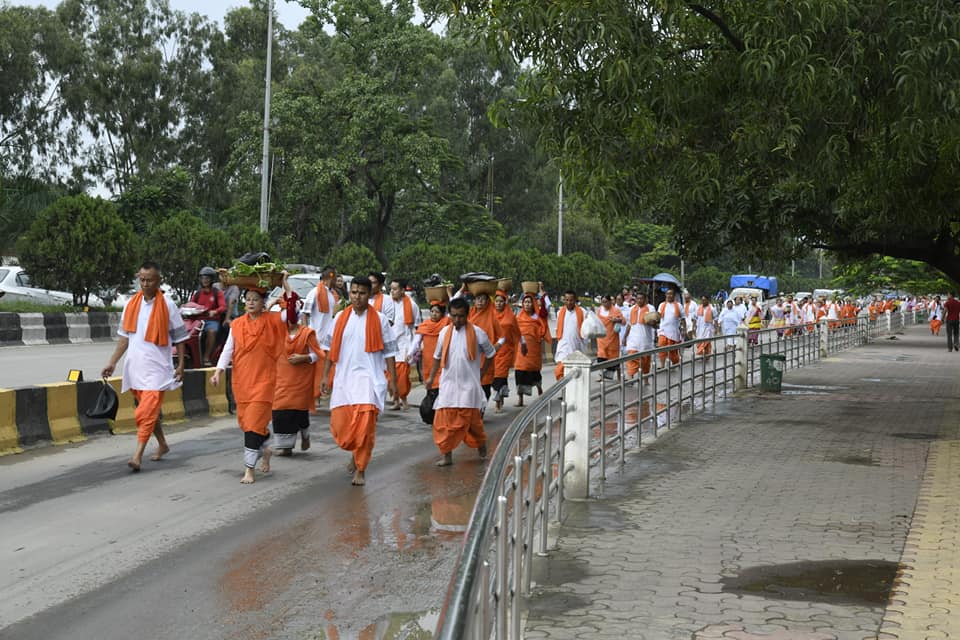Do you know the Anal tribes living in the Chandel districts of Manipur worships Ibudhou Wangpuren (Wangbren)? The tribes have a strong faith in the Meetei deity. Whoever challenged the power of Ibudhou are severely punished.
History of Manipur will be incomplete without knowing about Tangkhul Saram Pakhangba, Funal Maring Telheiba, Chothe Thangwai Pakhangba, Kabui Salang Maiba, Wangpuren of Anal.
Don’t be proud of two terms Kuki and Naga given by some foreigners. Know your roots, your identity and culture. No force can erase the history of Manipur. Citing some researcher’s view, “…Mao-Maram and Tangkhul ladies were the queens of Manipur from time to time. Notably, Ingallei, queen of Paikhomba, Nungthilchaibi, queen of Pamheiba, from the Mao-Marams and queen Leisana of Pakhangba from the Tangkhuls.”
After the Nongban clan, Nongyai from the Khuman Clan gained the ascendency. He has nine children and established their settlements at Mongba Sangai. His eldest son, Kaobi was the progenitor of the Khuman clan. The youngest son, Angou became an Angom. Another son became a Tangkhul.
When Kege (Keke) became the ruling clan, it brought in three clans namely, Khaba,Tangba and Chakot. Khaba became Khamaran tribe, Tangba became Tangkhul tribe and Chakot became the Chothe tribe. The Kege clan went southwards and merged with the Moirang clan. All these clans existed around 2000 BC, after King Kangba era.
Even, the Anal tribes living in Chandel district of Manipur cannot be separated from the Meetei tribes. Ibudhou Wangbrel, one of the nine deities who protect the south direction married an Anal lady named Shangnu of Anal Khullen. Shangnu or Shankhurembi was the only daughter of Anal Chief Mongyam Ngamba.
Ibudhou Wangbren was the God of Water. Homage is regularly paid at the Shrine, erecting two stones of which the bigger one symbolises Wangbren while the smaller symbolizing Shangnu.
An edible algae Nungsham or stone hair is found in the Chakpi river around Sugnu of Manipur. Local belief that this Nungsham (Lemanea species) is the hair of Anal goddess Shangnu.
Nungsham is regarded as the gift of goddess Shangnu to both Meetei and Anal tribes.
One can visit the Anals living in Chandel district and confirmed the belief of Ibudhou Wangbren and Ima Shangnu. Whosoever shows disrespect to Ibudhou Wangbren are met with misfortune. It was reported that a wild fire completely destroyed one of the village some years ago. Today, even though most of the Anals turned Christianity, they still worships Ibudhou Wangbren.
Initiative from the government to promote Anal Tribes
Anal Naga Taangpi (ANTA) has submitted a memorandum to the Government of Manipur stating, “We the Anal tribes are one of the most populous tribes in the Chandel district, also having firm relationship with the Meetei brethren from time immemorial when ‘Wangbren’ God of water had a nuptial ties with Anal damsel called Shangnu Shanghra of Anal Khullen village where till now the monolith and some Anal legend still exist.
We propose you to construct a tourist resort at Anal Khullen with proper pucca roads for better connectivity from Chakpikarong and Chandel district headquarters.”
Anal Khullen is located at a distance of around only 20 km from Chandel district headquarters.
Expressing hope that Ibudhou Wangbren’s sacred site would become a tourist destination in the near future, Manipur CM N Biren has said that promotion of eco-tourism is a must at places like Chandel, where people’s hospitality is so fine and the landscape is serenely beautiful .
Hope this small initiative will bring together the Anal tribes and Meetei closer like before.
One cannot deny the fact that Anal tribes are not Naga as claimed by the some historians. When Ibudhou Wangpuren married goddess Shangnu, there are no Naga in the region!
(C) Naorem Mohen
The Writer can be reached at Twitter @laimacha
Editor | Signpost News






